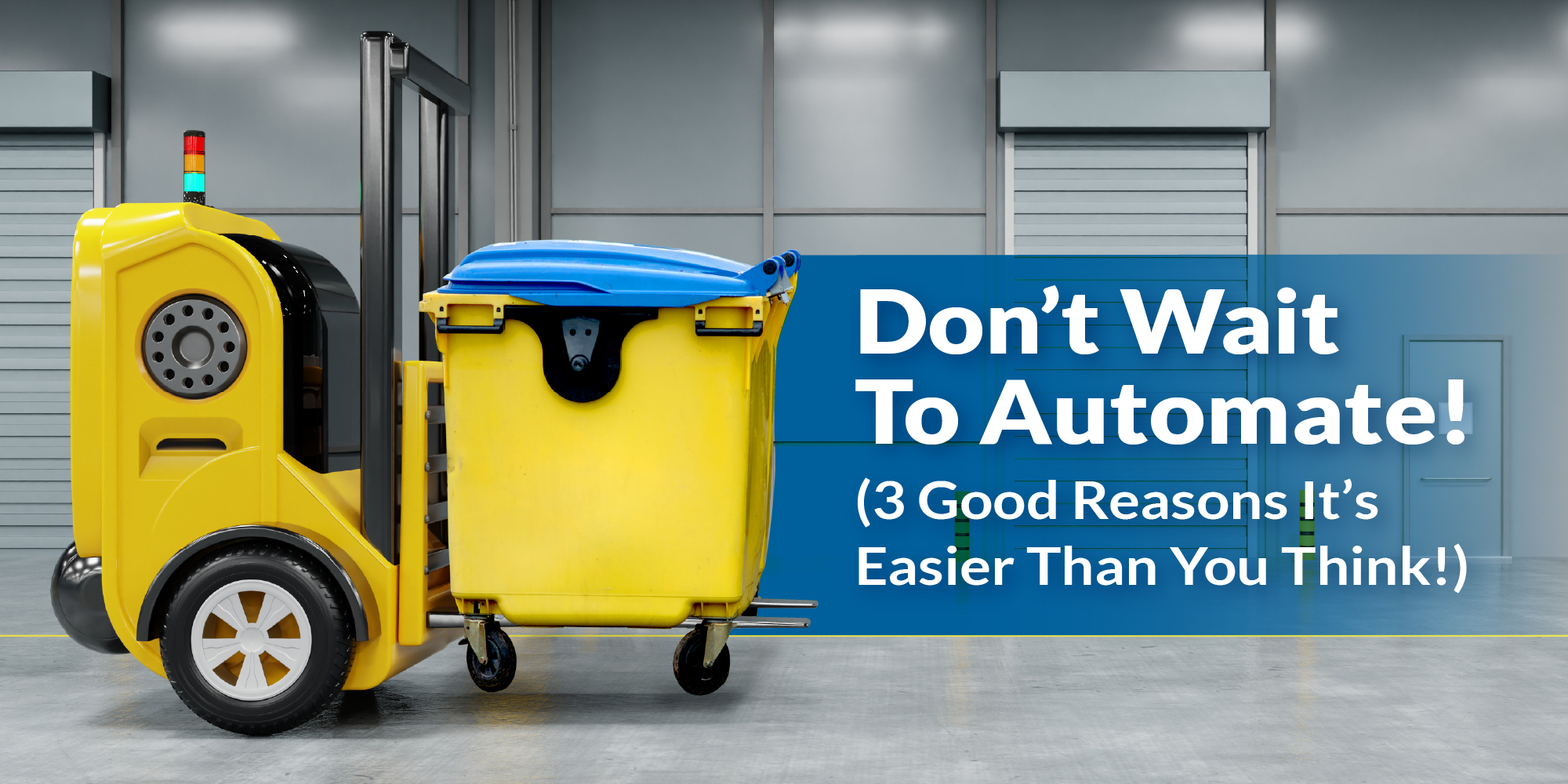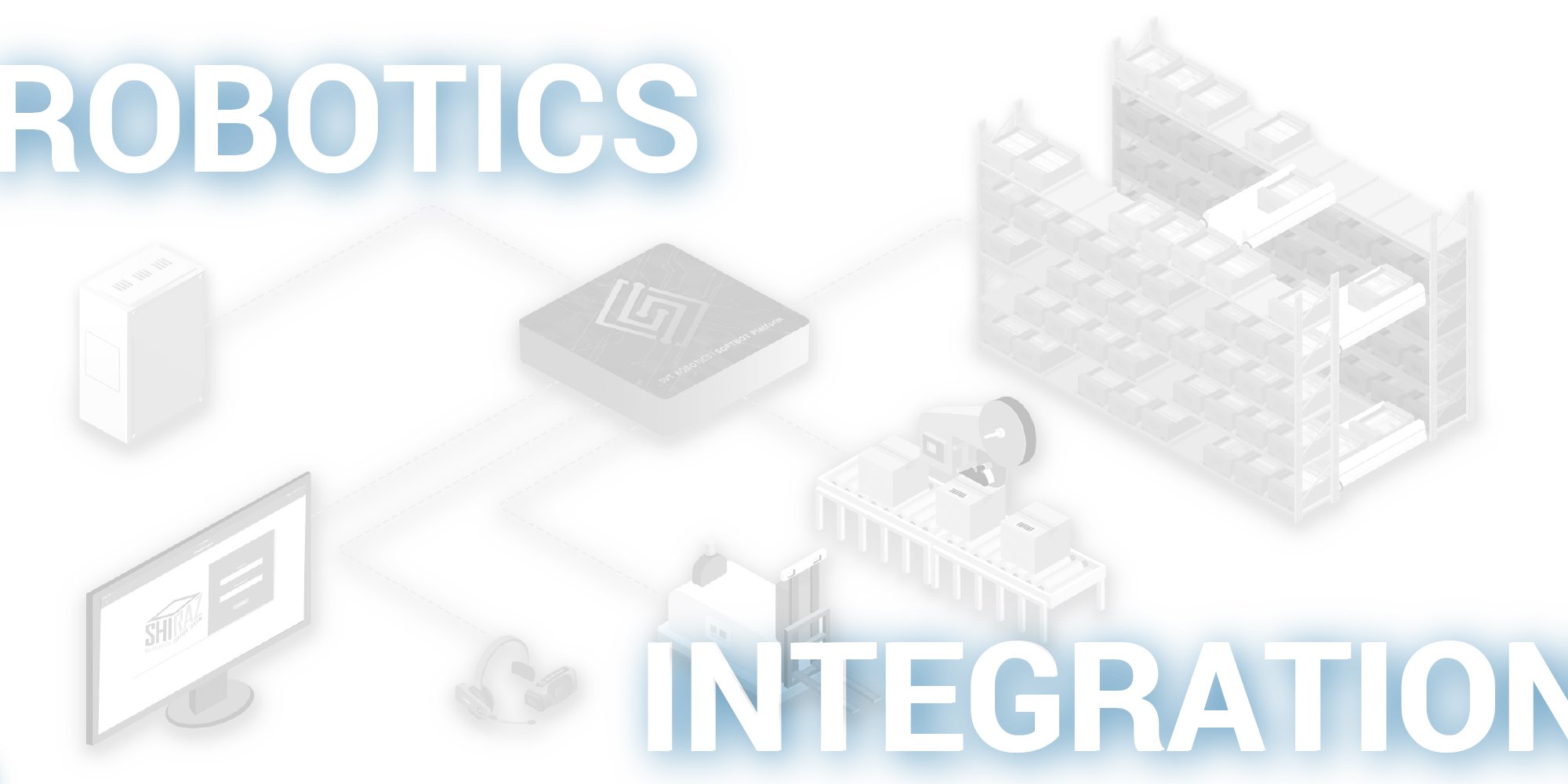If you’re one of the millions who have frequent Amazon package delivery, you can probably guess the eCommerce surge ushered in by the pandemic shows no signs of slowing anytime soon. That longevity is central to the increased demand for supply chain labor. And in the current economy where demand still exceeds supply, even wage increases have been unable to resolve the mismatch.
One way companies are reducing their reliance on labor is by leaning in to automation. Deploying automation for repetitive tasks can free employees to spend more time on high-value work and reduce reliance on labor in general across the supply chain. With today’s rapidly shifting consumer marketplace, even late adopters are joining the ranks of automation solutions.
But given that ability to help companies adapt to their supply chain challenges, why are some companies, maybe yours, still hesitating to automate?
Perhaps you're making operational changes to your warehouse and automating right now feels like less of a priority. Maybe you believe the cost to deploy automation is too high, or the time it takes for integration is too long. No matter the reason, waiting to automate can actually push your company further behind the competition.
Let’s take a look at three common myths surrounding automation, and why deploying now is simply the best next step for your company.
Myth: Deploying automation is too expensive.
In the not-to-distant past, companies needed massive capital outlay and lots of up-front time for entry into automation. That usually involved multi-million-dollar investments in one extensive system. Typically, a single supplier provided the hardware, and a separate company coded the integrations to make it operational. As a result, the process was long and expensive, making the perception of a costly entry rightly earned. Today, that’s no longer the case.
Fact: You can pilot technologies easily and with less financial risk.
To deploy robotics with less risk, companies must be empowered to quickly determine which technologies create the optimal solution for their business.
Thanks to new and innovative options, such as point solutions and technology-agnostic integration software, companies now have fast and economical access to automation. For example, many robot manufacturers have changed their sales models to offer Robots as a Service (RaaS). Instead of purchasing robots outright, RaaS customers can lease the technology for a monthly fee, typically with a commitment for a minimum number of months.
If the technology fails, you can easily test a different one or change course without much investment. If it’s successful, you can scale the full solution using a technology-agnostic integration platform in only days or weeks. That process can mean, for example, investing $50,000 versus $5 million in a solution to ascertain the direction of your company’s warehouse automation efforts – and with much less risk.
Myth: Time to ROI is considerable.
Until recently, deploying automation meant investing in a full system, including robots and software, plus months of coding to pilot, integrate, and scale the solution. The result is often inflexible and static automation that’s difficult and costly to update as your business needs invariably change. It also perpetuates the notion that automation is still less accessible unless you can spend months or years getting it deployed.
Fact: New technologies mean greatly accelerated ROI.
Now, you can begin with smaller automation and achieve ROI much quicker. For example, gain efficiencies by simply deploying IoT devices that monitor trash levels, then use a robot to empty bins when full. That means your forklift operator, who spent valuable time on that task, can stay in his picking flow. It goes beyond robotics too. Process automation (like integrating two ERP systems), inventory management software, automated workflows, and time-keeping systems are all automation tools your company can utilize one at a time to quickly improve operations.
You can also think locally rather than investing corporate-wide. If one specific site has a long distance between cross-docking locations, that site can lease AGVs to make simple point A to point B pickups. Now, your intelligent workforce isn’t spending time covering those long distances. The need can be unique and perhaps even recognized only by those working in that single location — and the cost to automate is low enough to be a regular facility expenditure. Even if only needed for a limited time, the robots can go back to the manufacturer, and you can optimize in a new way.
It’s now possible for your company to easily take a small step into automation, determine the solution that delivers results, and then iterate on that value—a significant benefit for companies who want to adopt automation but have been deterred by the high cost and long deployment timelines.
Myth: I need to wait for WMS or infrastructure upgrades.
A common reason you might be waiting to automate is planned migration to a new WMS or other infrastructure changes. Maybe you've chosen the WMS provider and the project is greenlit and on the road map for the following year, so you think adding any new technology before then could be an expensive waste of time and resources.
Fact: Rapid automation options deploy fast and easily change over to new platforms.
As fast as you can get AMRs and other automation tech into your building, it can be rapidly integrated and deployed using simplified technology-agnostic integration software. Depending on the technology and the tasks, it isn't necessary to be fully integrated to your current WMS to make that happen (although that is an option as well).
Because integration software can add business logic to their orchestration layer, modifications can be reduced that would typically be required within the WMS code when the time comes to migrate to your new WMS. That enables you to have an easier upgrade path, and you’re not waiting for next year’s project completion to see ROI right away.
Automating now is easier than ever.
It’s undeniable that automation and robotics adoption can make an immediate impact on improving business outcomes. And given today’s supply chain challenges, immediate impact is truly dependent on immediate deployments.
SVT Robotics has solved the most significant challenge of integrating disparate software and hardware across a facility. We designed the SOFTBOT Platform as a technology-agnostic software with drag-and-drop simplicity, enabling rapid and easy integration with enterprise software and point-solution technologies. Whether you are switching WMS platforms or awaiting new hardware, you can deploy automation and be up and running in days instead of months.
Lower your barrier to entry, improve time to ROI, and ease the pain of upgrades. Contact us today to find out how you can get started!




.jpg)

